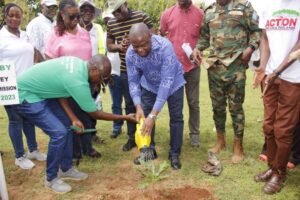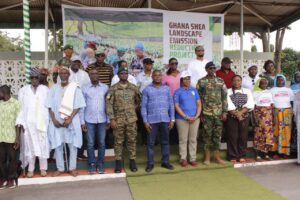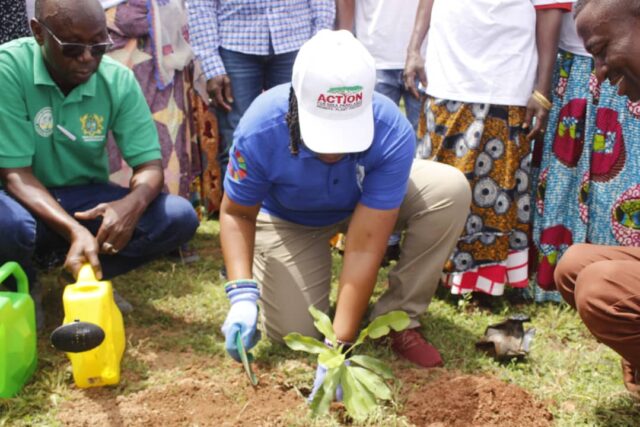Global Shea Alliance, United Nations Development Programmes (UNDP) in collaboration with the Forestry Commission and the Ghana Armed Forces in the Northern Region have begun planting over 1,000 grafted shea seedlings under the Ghana Shea Landscape Emission Reduction Project (GSLERP) in Tamale.
This is to contribute to the goal of planting 3.5 million grafted shea trees in the Northern Savannah Zone by 2027. Grafting of the shea tree is expected to reduce its gestation period from 15 to 20 years to between 5 to 7 years.
The Ghana Shea Landscape Emission Reductions Project (GSLERP) is the second flagship project to be developed out of Ghana’s 20-year REDD+ strategy launched in 2016. The Project seeks to mitigate the effects of climate change within the fragile ecosystem of the Northern Savannah Landscapes and to improve the shea value chain.

Speaking at the ceremony to plant the first ever 1,000 grafted cash crop at the Bawa Barracks in Tamale the Executive Director of Global Shea Alliance (GSA), Aaron Adu said to achieve this 3.5 million target seedlings they intend to graft and transplant one million by 2024.
“So far under component 2.1 of the project, the GSA has established 45 shea nurseries and potted 1, 578,181 million shea seeds. From the seedlings developed in 2022, we have planted 70,940 non-shea trees, 3,047 shea trees, and 25,000 grafted shea seedlings. In 2024, we will graft 1 million seedlings and transplant them accordingly” he said.
The UNDP Country Representative Dr. Angela Lusigi said the Northern Savannah Zone of Ghana is a key area of interest in this project due to its fragile ecosystem that is sensitive to the effects of climate change. According to her, there has been rapid forest degradation and deforestation, with an extensive loss of shea trees.“ The total forest covers in the north declined by 77% between 2001 and 2015. This resulted in the emission of over 3.5 million tonnes of CO2 per annum” she said.
Dr. Lusigi reiterated the UNDP’s commitment to working with its partners to support the government and the people of Ghana through its climate change initiatives to advance inclusive, resilient, and sustainable development for the SDGs.

The Chief Executive Officer of the Forestry Commission John Allotey on his part said the GSLERP also has the potential to generate emission reductions payments results if the project is successfully implemented to achieve its planned contribution to Ghana’s Nationally Determined Contributions to the Paris Agreement. “Through such, the premier program in the strategy, for the Cocoa-Forest landscape of Ghana has already received its first results-based payments of USD 4.8 million through the Carbon Fund of the World Bank,” he noted.
Air Commodore Mensah-Larka, Airforce Base Commander thanked the Global Shea Alliance and its partners for choosing Bawa Barracks as a demonstration site to plant grafted shea seedlings. He assured the military would do their best to protect these plants.









![Ayra Starr unveils her own dolls [VIDEO]](https://mx24online.com/wp-content/uploads/2024/07/132420163_4.ceremonialcapdenkyemkyetrusteesofthebritishmuseum-100x75.webp)